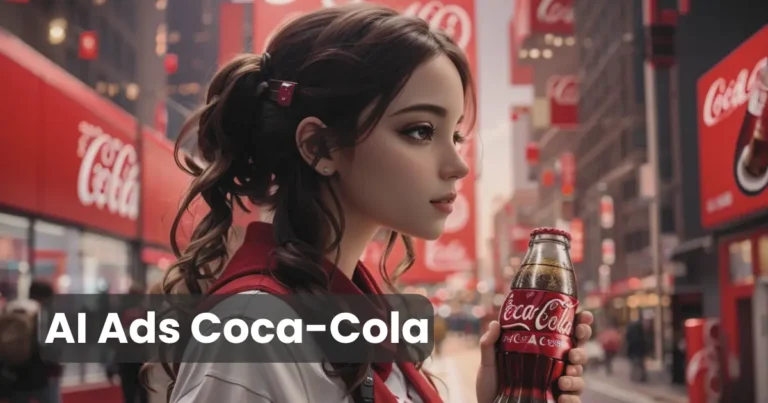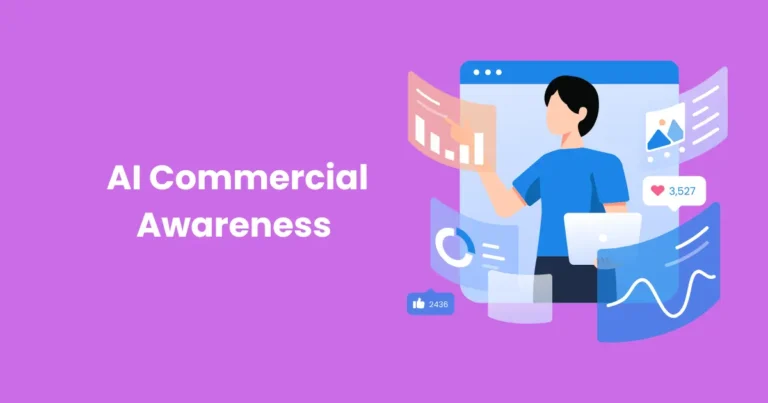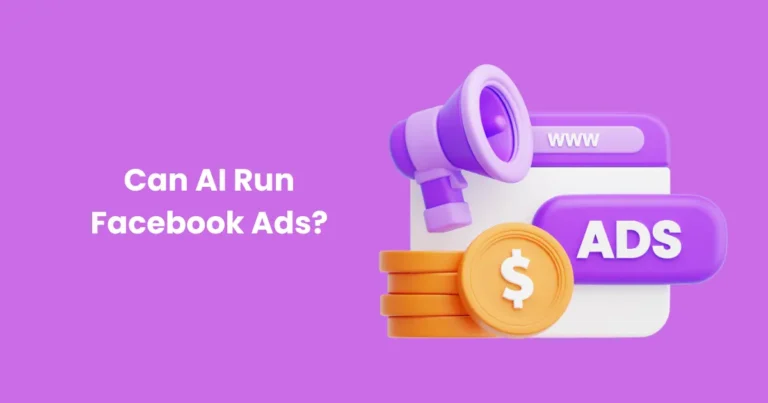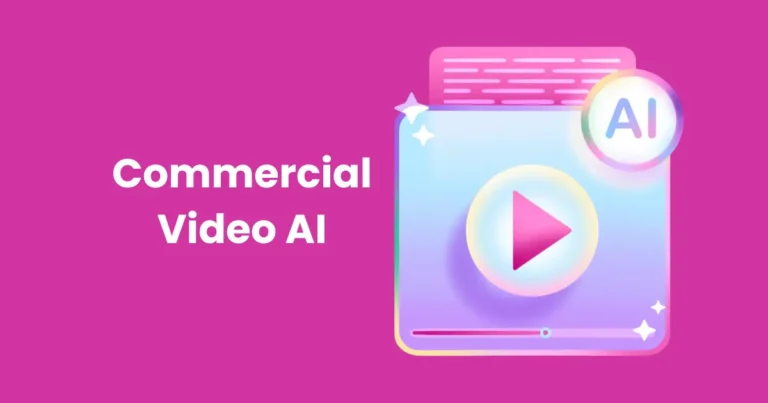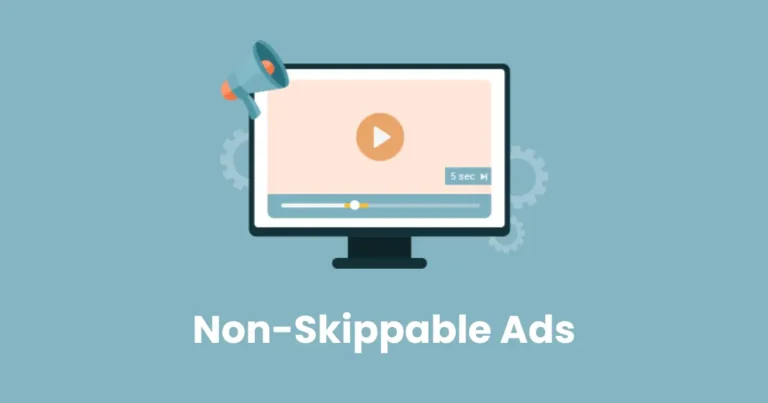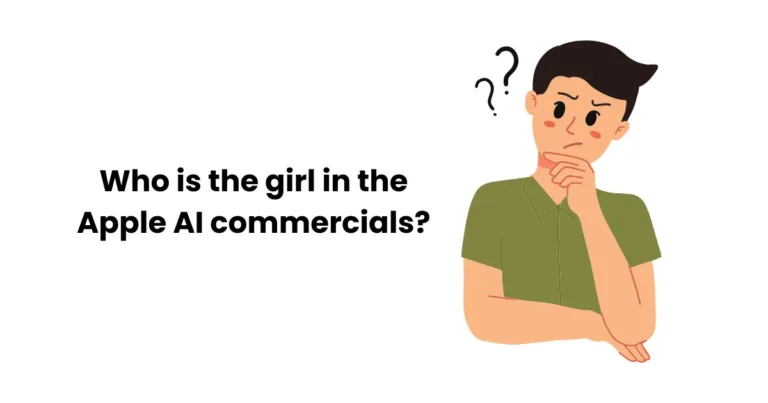Social Media Video Ads | Types of Social Media Video Ads
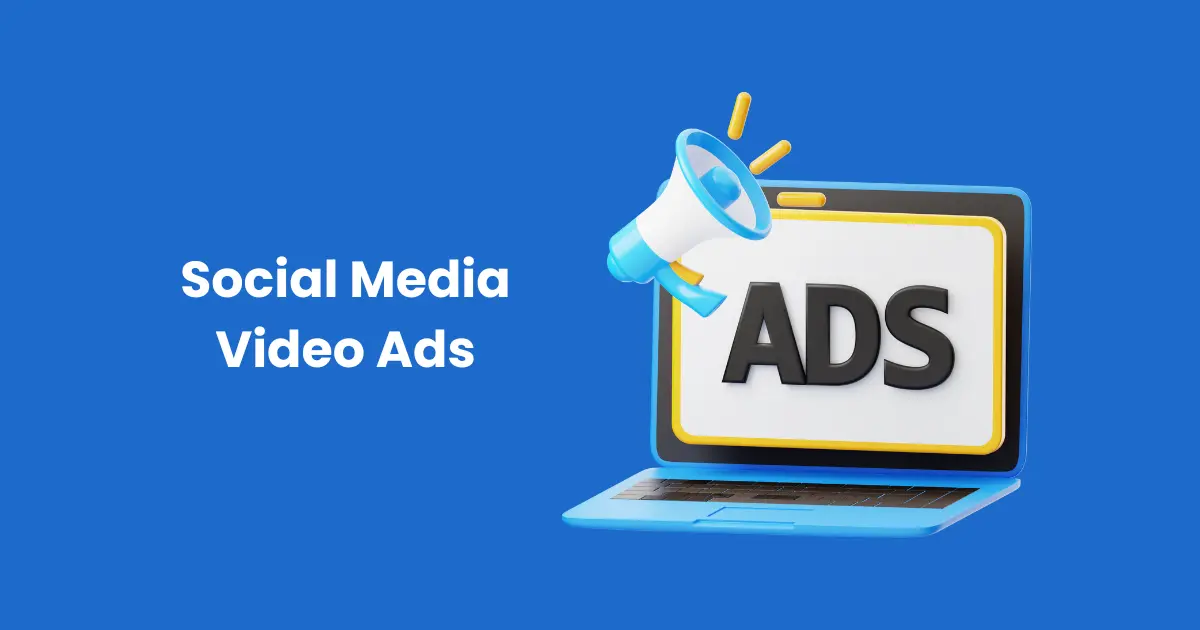
Contents
- 1 What Are Social Media Video Ads?
- 2 Importance of Social Media Video Ads
- 3 Types of Social Media Video Ads
- 3.1 1. In-Feed Video Ads
- 3.2 2. Story Ads
- 3.3 3. Live Stream Ads
- 3.4 4. Carousel Video Ads
- 3.5 5. Shoppable Video Ads
- 3.6 6. In-Stream Video Ads (Pre-Roll, Mid-Roll, and Post-Roll Ads)
- 3.7 7. User-Generated Content (UGC) Ads
- 3.8 8. GIF and Short Video Ads
- 3.9 9. Poll and Interactive Video Ads
- 3.10 10. Cinemagraph Video Ads
- 4 Best Platforms for Social Media Video Ads
- 5 How to Create Engaging Social Media Video Ads
- 5.1 1. Define Your Objective
- 5.2 2. Know Your Target Audience
- 5.3 3. Keep It Short and Captivating
- 5.4 4. Focus on Storytelling
- 5.5 5. Use High-Quality Visuals and Audio
- 5.6 6. Add a Strong Call-to-Action (CTA)
- 5.7 7. Optimize for Different Platforms
- 5.8 8. Leverage Music, Sound Effects, and Voiceovers
- 5.9 9. A/B Test Your Video Ads
- 5.10 10. Track Performance and Optimize
- 6 Social Media Video Ads Best Practices
- 6.1 1. Capture Attention Immediately
- 6.2 2. Optimize for Mobile Viewing
- 6.3 3. Include Subtitles or Captions
- 6.4 4. Prioritize the First Few Seconds
- 6.5 5. Use a Clear Call-to-Action (CTA)
- 6.6 6. Tailor Content to Each Platform
- 6.7 7. Leverage Storytelling
- 6.8 8. Focus on Quality
- 6.9 9. Experiment with Different Ad Formats
- 6.10 10. Use Data to Optimize Ads
- 6.11 11. Incorporate Branding Consistently
- 6.12 12. Keep It Relevant and Valuable
- 7 Common Mistakes to Avoid in Social Media Video Ads
- 7.1 1. Ignoring the First Few Seconds
- 7.2 2. Making Videos Too Long
- 7.3 3. Not Optimizing for Mobile
- 7.4 4. Forgetting to Add Captions
- 7.5 5. Using Generic or Stock Footage
- 7.6 6. Lacking a Clear Call-to-Action (CTA)
- 7.7 7. Not Tailoring Videos for Each Platform
- 7.8 8. Overloading the Video with Information
- 8 Future Trends in Social Media Video Ads
- 8.1 1. Increased Use of Artificial Intelligence (AI) and Automation
- 8.2 2. Shoppable Video Ads
- 8.3 3. Short-Form Video Content
- 8.4 4. Interactive and Immersive Video Ads
- 8.5 5. Voice Search and Voice-Activated Ads
- 8.6 6. Influencer and Micro-Influencer Collaborations
- 8.7 7. Advanced Analytics and Real-Time Optimization
- 8.8 Conclusion
Social media video ads have revolutionized digital marketing by providing businesses with a dynamic way to engage their audience. With billions of active users across platforms like Facebook, Instagram, YouTube, and TikTok, video ads offer an unmatched opportunity to capture attention and drive conversions. Since social media algorithms favor video content, businesses leveraging social media video ads can achieve higher engagement, better brand awareness, and increased sales. This article explores the importance of social media video ads, their different types, the best platforms to use, strategies for creating high-performing ads, and emerging trends in the industry.
What Are Social Media Video Ads?
Social media video ads are paid promotional videos that appear on platforms like Facebook, Instagram, YouTube, TikTok, LinkedIn, and Twitter. These ads are designed to capture users’ attention quickly and encourage them to take specific actions, such as visiting a website, making a purchase, or following a brand.
Unlike traditional text or image-based ads, social media video ads use motion, sound, and visuals to create a more immersive experience. They can appear in different formats, such as in-feed videos, story ads, carousel videos, or live stream ads, depending on the platform.
Businesses use social media video ads to:
- Increase brand awareness by reaching a larger audience.
- Boost engagement through visually compelling content.
- Drive traffic and sales with clear calls to action.
- Enhance user experience with interactive and informative videos.
Since video content is more likely to be shared and remembered, social media video ads have become an essential tool for digital marketing success.
Importance of Social Media Video Ads
Social media video ads have become an essential component of digital marketing, helping businesses connect with their audience in an engaging and visually compelling way. With the increasing dominance of video content across social media platforms, brands that invest in social media video ads can experience significant growth in reach, engagement, and conversions. Below are the key reasons why social media video ads are important:

1. Higher Engagement Rates
Videos are more engaging than static images or text-based posts. Social media algorithms prioritize video content, making social media video ads more likely to be seen and interacted with by users. A well-crafted video ad can increase likes, shares, and comments, leading to greater visibility and organic reach.
2. Improved Brand Awareness
Since video ads combine motion, sound, and storytelling, they create a lasting impression on viewers. Businesses that use social media video ads can effectively showcase their brand identity, values, and products in a way that resonates with their target audience.
3. Increased Conversion Rates
Studies show that users are more likely to make a purchase after watching a video ad. Social media video ads effectively showcase products, demonstrate their benefits, and include strong calls to action (CTAs), encouraging viewers to take the next step, whether it’s signing up, making a purchase, or visiting a website.
4. Better Information Retention
Video content is easier to remember than text-based content. People retain 95% of a message when they watch it in a video, compared to only 10% when reading it in text form. This means social media video ads help brands communicate their message in a more effective and memorable way.
5. Wider Audience Reach
Social media platforms have billions of active users, and video content is the most shared type of content. Businesses using social media video ads can reach a global audience, increasing their brand exposure and potential customer base.
6. Mobile Optimization and Accessibility
With the rise of mobile usage, video ads are optimized for mobile viewing, making them easy to watch and interact with. Features like autoplay, captions, and vertical video formats ensure that social media video ads can engage users even without sound.
7. Cost-Effective Advertising Strategy
Compared to traditional advertising methods, social media video ads offer better targeting options at a lower cost. Businesses can set specific demographics, interests, and behaviors to ensure their video ads reach the right audience, maximizing their return on investment (ROI).
The importance of social media video ads cannot be overstated. They enhance engagement, improve brand awareness, boost conversions, and offer a cost-effective way to reach a global audience. As social media platforms continue to evolve, businesses that incorporate video ads into their marketing strategy will be better positioned for success.
Types of Social Media Video Ads
Social media video ads come in various formats, each designed to engage users in different ways. Choosing the right type of video ad depends on the platform, target audience, and marketing goals. Below are the most common types of social media video ads:

1. In-Feed Video Ads
These ads appear directly in users’ social media feeds as they scroll through content. They blend seamlessly with organic posts, making them less intrusive and more engaging. In-feed video ads work well for brand awareness, product promotions, and storytelling.
Platforms: Facebook, Instagram, Twitter, LinkedIn, TikTok
2. Story Ads
Story ads are short, full-screen vertical videos that appear between organic stories on platforms like Instagram, Facebook, and Snapchat. Since they take up the entire screen, they provide an immersive experience. These ads often include interactive elements like swipe-up links and polls.
Platforms: Instagram, Facebook, Snapchat, TikTok
3. Live Stream Ads
Live stream ads allow businesses to advertise during live broadcasts. These ads can appear before or during a live stream, engaging viewers in real-time. Brands also collaborate with influencers who showcase products live, answering questions and demonstrating their use.
Platforms: Facebook Live, YouTube Live, Instagram Live, Twitch
4. Carousel Video Ads
Carousel video ads consist of multiple videos in a swipeable format, allowing advertisers to showcase different products, features, or stories in a single ad. They are effective for storytelling and eCommerce promotions.
Platforms: Facebook, Instagram, LinkedIn
5. Shoppable Video Ads
These interactive ads allow users to purchase products directly from the video by clicking on embedded links or product tags. Shoppable video ads reduce friction in the buying process, making them highly effective for eCommerce brands.
Platforms: Instagram, Facebook, TikTok, Pinterest
6. In-Stream Video Ads (Pre-Roll, Mid-Roll, and Post-Roll Ads)
In-stream video ads play before (pre-roll), during (mid-roll), or after (post-roll) a video. These ads are commonly found on video-heavy platforms like YouTube and Facebook Watch. Skippable and non-skippable versions are available, depending on the platform’s ad format.
Platforms: YouTube, Facebook, Instagram
7. User-Generated Content (UGC) Ads
These ads feature content created by real customers or influencers, increasing trust and authenticity. Brands repurpose customer testimonials, reviews, or product demonstrations in their ads to make them more relatable.
Platforms: Instagram, TikTok, Facebook
8. GIF and Short Video Ads
Short, looping video ads (such as GIFs) deliver quick and engaging messages within a few seconds. These ads are ideal for catching users’ attention without requiring a long watch time.
Platforms: Twitter, Instagram, Facebook
9. Poll and Interactive Video Ads
These ads engage users with interactive elements like polls, quizzes, and clickable options. By encouraging participation, brands can increase engagement and collect valuable audience insights.
Platforms: Instagram Stories, Facebook, YouTube
10. Cinemagraph Video Ads
Cinemagraphs are a hybrid between a photo and a video, where only one element moves while the rest remains static. These visually striking ads create a sense of mystery and intrigue, making them highly engaging.
Platforms: Instagram, Facebook, LinkedIn
Each type of social media video ad serves a unique purpose and is suited to different marketing objectives. By selecting the right format, businesses can maximize engagement, increase conversions, and create memorable experiences for their audience.
Best Platforms for Social Media Video Ads
Choosing the right platform for social media video ads is crucial for maximizing reach, engagement, and conversions. Different platforms cater to various audience demographics and content styles, making it essential to align your ad strategy with the right channel. Below are the best platforms for running successful social media video ads:

1. Facebook
Why Use It?
- One of the largest social media platforms, with over 2.9 billion active users.
- Offers advanced targeting options based on demographics, interests, and behaviors.
- Supports multiple ad formats, including in-feed videos, carousel ads, in-stream video ads, and story ads.
Best for: Brand awareness, lead generation, eCommerce, and retargeting.
2. Instagram
Why Use It?
- A visually-driven platform with high engagement rates, especially for younger audiences.
- Features immersive video formats like Instagram Stories, Reels, IGTV, and in-feed video ads.
- Strong influencer marketing ecosystem.
Best for: Lifestyle brands, fashion, beauty, fitness, and interactive storytelling.
3. YouTube
Why Use It?
- The second-largest search engine after Google, with over 2.5 billion monthly users.
- Users spend more time watching video content compared to other platforms.
- Supports various ad types, including skippable and non-skippable in-stream ads, bumper ads, and overlay ads.
Best for: Long-form content, tutorials, product demonstrations, and brand storytelling.
4. TikTok
Why Use It?
- A fast-growing platform with over 1 billion active users, particularly popular among Gen Z and Millennials.
- Short-form, engaging video content designed for quick consumption.
- Ad formats include In-Feed Ads, TopView Ads, Branded Hashtag Challenges, and Branded Effects.
Best for: Viral marketing, brand awareness, user-generated content, and interactive campaigns.
5. LinkedIn
Why Use It?
- The best platform for B2B marketing and professional networking.
- Supports video ads for brand awareness, lead generation, and thought leadership content.
- Offers precise targeting based on job titles, industries, company size, and professional interests.
Best for: B2B businesses, SaaS companies, corporate training, and professional services.
6. Twitter (X)
Why Use It?
- Great for real-time engagement and trending topics.
- Supports short video ads, in-feed video ads, and promoted tweets with video content.
- Best suited for event promotions, brand announcements, and quick, attention-grabbing ads.
Best for: News, sports, entertainment, and real-time marketing.
7. Snapchat
Why Use It?
- Popular among younger audiences (ages 13-34).
- Features vertical, full-screen video ads that blend seamlessly with organic content.
- Offers interactive ad formats like AR lenses, filters, and story ads.
Best for: Youth-focused brands, entertainment, gaming, and immersive ad experiences.
8. Pinterest
Why Use It?
- A highly visual platform where users actively search for inspiration and products.
- Video Pins allow brands to showcase tutorials, DIY content, and product demonstrations.
- Strong eCommerce and shopping integration.
Best for: Home decor, fashion, beauty, DIY, and product discovery.
Selecting the best platform for social media video ads depends on your target audience, content style, and marketing goals. Facebook and Instagram offer broad reach and advanced targeting, YouTube is ideal for long-form content, TikTok excels in viral engagement, and LinkedIn is perfect for B2B advertising. By leveraging the right platforms, businesses can maximize the impact of their social media video ads and achieve higher ROI.
How to Create Engaging Social Media Video Ads
Creating engaging social media video ads requires a combination of creativity, strategy, and optimization. To capture your audience’s attention and drive conversions, follow these key steps:

1. Define Your Objective
Before creating an ad, determine the main goal. Common objectives include:
- Increasing brand awareness
- Driving website traffic
- Boosting sales and conversions
- Growing social media engagement
- Promoting a product or service
Each objective influences the structure, message, and call-to-action (CTA) of the video ad.
2. Know Your Target Audience
Understanding your audience is crucial for making effective social media video ads. Research your ideal customers based on:
- Demographics (age, gender, location)
- Interests and behaviors
- Pain points and needs
- Preferred social media platforms
Tailor your content to match their preferences and challenges.
3. Keep It Short and Captivating
Users scroll through social media quickly, so capture their attention within the first 3–5 seconds. To make your video ad more engaging:
- Start with an eye-catching hook
- Highlight the value proposition early
- Use fast-paced visuals and text overlays
- Keep the total length under 15–30 seconds for maximum impact
4. Focus on Storytelling
People connect more with stories than plain promotions. A compelling narrative helps build an emotional connection. Effective storytelling techniques include:
- Presenting a problem and offering a solution
- Using testimonials or real-life experiences
- Showcasing behind-the-scenes footage
- Demonstrating product benefits in real-time
5. Use High-Quality Visuals and Audio
Quality matters in social media video ads. Poor visuals or unclear audio can drive viewers away. Ensure:
- HD video resolution (1080p or higher)
- Good lighting and clear audio
- Smooth transitions and animations
- Readable text and captions (important for viewers watching on mute)
6. Add a Strong Call-to-Action (CTA)
Encourage users to take action by adding a clear and compelling CTA. Examples include:
- “Shop Now”
- “Sign Up Today”
- “Learn More”
- “Get Your Free Trial”
- “Swipe Up for More” (for stories and reels)
Make sure the CTA matches your campaign goal.
7. Optimize for Different Platforms
Each social media platform has unique video ad specifications. Ensure your content is:
- Formatted correctly (vertical for Stories, square for Instagram, horizontal for YouTube)
- Optimized for autoplay (silent mode) by using captions and on-screen text
- Mobile-friendly, as most users access social media on their phones
8. Leverage Music, Sound Effects, and Voiceovers
Adding background music or voiceovers makes your social media video ads more engaging. Consider:
- Upbeat music for energetic ads
- Soft music for emotional or educational content
- Voiceovers to explain product features
Ensure the audio aligns with your brand’s message.
9. A/B Test Your Video Ads
To maximize performance, test different variations of your ads. Experiment with:
- Different hooks or introductions
- Various CTAs
- Alternative video lengths
- Different ad placements (feed, stories, reels)
Use insights from analytics to refine future campaigns.
10. Track Performance and Optimize
Monitor your ad’s performance through social media analytics. Key metrics to track include:
- View-through rate (VTR) – How many people watch the full ad
- Engagement rate – Likes, shares, and comments
- Click-through rate (CTR) – How many users click on the CTA
- Conversion rate – How many take the desired action
Optimize underperforming ads by adjusting visuals, messaging, or targeting.
Creating engaging social media video ads requires a mix of creativity, strategy, and data-driven optimization. By crafting short, high-quality, and story-driven videos tailored to your audience, you can increase engagement, drive conversions, and build a strong brand presence across different platforms.
Social Media Video Ads Best Practices
To ensure your social media video ads achieve maximum impact and drive results, it’s important to follow best practices that enhance their effectiveness. Below are key best practices to guide your video ad creation and strategy:

1. Capture Attention Immediately
The first few seconds of your video are critical in grabbing the viewer’s attention. To make an immediate impact:
- Hook your audience with a bold, eye-catching opening.
- Show the most important information or benefit right away.
- Avoid lengthy intros—get straight to the point.
2. Optimize for Mobile Viewing
The majority of social media users watch videos on mobile devices. Therefore, it’s crucial to design your video ads for a seamless mobile experience:
- Use vertical or square video formats for platforms like Instagram Stories, Facebook, and TikTok.
- Ensure text is legible even on small screens.
- Keep the video short—viewers are more likely to engage with concise, mobile-friendly content.
3. Include Subtitles or Captions
Many users watch videos without sound, especially on social media platforms. By including subtitles or captions, you:
- Ensure your message is conveyed even if the sound is off.
- Improve accessibility for a broader audience, including those with hearing impairments.
- Keep the text concise and synchronized with the video.
4. Prioritize the First Few Seconds
In the age of short attention spans, social media video ads must be engaging from the very beginning. Studies show that users decide whether to continue watching a video within the first 3–5 seconds. Tips for a strong start:
- Start with a question or problem that resonates with your audience.
- Show a product demo or unique selling point immediately.
- Avoid lengthy intros or preambles.
5. Use a Clear Call-to-Action (CTA)
A strong, clear call-to-action (CTA) directs viewers on what to do next. Make sure your CTA is visible and compelling:
- Be specific—e.g., “Shop Now,” “Learn More,” or “Download the App.”
- Keep it concise and actionable.
- Position the CTA at the end of the video, but also incorporate it throughout if it makes sense.
6. Tailor Content to Each Platform
Different social media platforms have distinct features, audiences, and video specifications. Ensure your video ad is optimized for each platform:
- Facebook and Instagram: Use square videos for feeds, vertical for Stories.
- YouTube: Opt for horizontal video format.
- TikTok and Snapchat: Vertical video is essential.
- LinkedIn: Professional tone with square or landscape format.
7. Leverage Storytelling
People are more likely to remember and engage with stories rather than generic ads. Use storytelling techniques to build emotional connections:
- Highlight a relatable problem and demonstrate how your product or service offers a solution.
- Show real-life examples or customer testimonials to add authenticity.
- Include a beginning, middle, and end—showcase the transformation your product brings.
8. Focus on Quality
High-quality visuals and sound make a significant difference in the effectiveness of your ad. Ensure your video is:
- High resolution (preferably 1080p or above).
- Well-lit to highlight the subject and avoid shadows.
- Clear and professional in terms of both visual and audio quality.
9. Experiment with Different Ad Formats
Different ad formats cater to varying user preferences. Test a variety of video types to see what resonates best with your audience:
- In-feed videos: Appear directly in users’ feeds and blend with organic content.
- Stories and Reels: Short, engaging videos that encourage interaction.
- Carousel videos: Showcase multiple products or features in one ad.
- Shoppable videos: Allow users to purchase directly from the video.
10. Use Data to Optimize Ads
Regularly monitor the performance of your social media video ads to identify what works and what doesn’t:
- Track metrics like view-through rate (VTR), click-through rate (CTR), engagement rate, and conversion rate.
- Test different video lengths, CTAs, and ad copy through A/B testing.
- Make data-driven adjustments based on audience feedback and ad performance.
11. Incorporate Branding Consistently
Ensure your brand’s identity is clear and consistent throughout the video:
- Use your logo, brand colors, and font styles consistently.
- Align the video’s tone and messaging with your brand’s overall voice.
- Don’t forget to include brand recognition elements early in the video for better recall.
12. Keep It Relevant and Valuable
Your social media video ads should provide value to your audience. Focus on offering:
- Useful information that helps solve a problem.
- Entertaining content that aligns with your audience’s interests.
- Exclusive offers or discounts to drive immediate action.
By following these best practices for social media video ads, you can create content that resonates with your audience, boosts engagement, and drives measurable results. Whether you’re aiming for brand awareness, higher conversions, or increased interactions, optimizing your video ads based on these tips will help you stand out in the crowded social media landscape.
Common Mistakes to Avoid in Social Media Video Ads
While creating social media video ads, it’s easy to make mistakes that can negatively affect your campaign’s effectiveness. These errors can lead to poor engagement, wasted ad spend, and missed opportunities for conversions. Below are some of the most common mistakes to avoid when crafting your video ads:

1. Ignoring the First Few Seconds
The first few seconds of your social media video ads are crucial in capturing attention. Many creators fail to make the beginning engaging enough, leading viewers to scroll past. Avoid:
- A slow or irrelevant intro that loses the viewer’s attention.
- Being too subtle about your message or goal—make it clear from the start.
- Focusing too much on brand storytelling rather than value.
Tip: Start with a hook, whether it’s a question, shocking statement, or problem you’re solving, to immediately engage the viewer.
2. Making Videos Too Long
In the fast-paced world of social media, users have limited attention spans. Videos that are too long may lose interest, especially if they don’t offer instant value. Mistakes to watch out for:
- Videos that run for more than 30 seconds without clear value.
- Over-explaining features or going off-topic.
- A lack of focus on the main message throughout the video.
Tip: Keep it short, clear, and concise. Aim for 15–30 seconds for most social media platforms.
3. Not Optimizing for Mobile
Since the majority of social media users access platforms via mobile devices, failing to optimize videos for mobile viewing is a critical mistake. Common issues include:
- Videos that aren’t formatted for vertical or square screens, which are preferred for mobile devices.
- Text and images that are hard to read on smaller screens.
- Slow loading times or buffering issues.
Tip: Ensure your videos are mobile-friendly by using vertical (9:16) or square (1:1) formats, and check legibility across devices.
4. Forgetting to Add Captions
A significant portion of social media users watch videos on mute, especially in public places or during work hours. Social media video ads without captions miss out on conveying the message to a broad audience. Avoid:
- Assuming viewers will turn the sound on.
- Failing to provide subtitles or text to support your message.
- Leaving important details or calls-to-action (CTAs) unclear without captions.
Tip: Always include subtitles or on-screen text to convey your message, even when sound is off.
5. Using Generic or Stock Footage
Using stock footage may seem like a quick fix, but it can make your social media video ads feel impersonal and less engaging. Mistakes include:
- Relying too heavily on generic footage that doesn’t align with your brand’s voice.
- Using overly polished but irrelevant visuals that don’t connect with the audience.
- Failing to add authentic elements, such as real customer testimonials or behind-the-scenes footage.
Tip: Whenever possible, create original content that reflects your brand’s personality and values. Incorporating real-life experiences can create a stronger emotional connection.
6. Lacking a Clear Call-to-Action (CTA)
A social media video ad without a clear and direct call-to-action (CTA) can leave viewers confused about what to do next. Avoid:
- Ending the video without telling the viewer what action to take.
- Overcomplicating the CTA or offering multiple conflicting options.
- Leaving the CTA vague, such as just “Learn More” without any context.
Tip: Keep the CTA simple and actionable—whether it’s “Shop Now,” “Download Today,” or “Sign Up for a Free Trial.” Ensure the CTA is clear, compelling, and aligned with the campaign’s objective.
7. Not Tailoring Videos for Each Platform
Social media platforms have different requirements, audience behaviors, and ad formats. A mistake is to use the same video across all platforms without considering these differences. Issues to avoid:
- Posting a horizontal video on a platform that favors vertical or square formats.
- Failing to optimize video length for specific platforms. For example, Instagram Stories favor shorter, quick-to-consume videos compared to YouTube.
- Not considering platform-specific features, like Instagram’s shopping feature or Facebook’s lead generation forms.
Tip: Customize each video ad to fit the unique requirements and audience of each platform.
8. Overloading the Video with Information
While it’s important to share key information, overloading a social media video ad with too much detail can overwhelm viewers and cause them to disengage. Mistakes include:
- Adding excessive text, numbers, or jargon that distract from the main message.
- Trying to cover too many aspects of your product or service at once.
- Not keeping a singular focus throughout the video.
Tip: Focus on one key message or problem, and keep it simple and digestible. Use visuals and text to highlight the most important points.
Avoiding these common mistakes in your social media video ads can significantly improve their effectiveness, engagement, and conversion rates. By focusing on creating clear, concise, and targeted videos that speak to your audience’s needs, you’ll boost your chances of success in an increasingly competitive landscape. Always test, refine, and stay true to your brand to achieve the best results!
Future Trends in Social Media Video Ads
As technology continues to evolve, so do the ways in which social media video ads are created, shared, and consumed. Staying ahead of these trends can give marketers an edge in creating compelling and effective video ads. Below, we explore some of the emerging trends that are shaping the future of social media video ads.

1. Increased Use of Artificial Intelligence (AI) and Automation
AI is already playing a significant role in social media video ads, and its influence will only grow. AI tools can analyze vast amounts of data to determine what kind of video content resonates best with audiences, allowing marketers to optimize ads more effectively.
- Personalized ads: AI will help create more personalized ads by analyzing user behavior and tailoring content to individual preferences.
- Automated video creation: Tools powered by AI can generate video ads quickly, adapting existing content to various formats and audiences without human intervention.
- Dynamic creative optimization: AI will allow advertisers to automatically adjust elements such as video length, imagery, and messaging to maximize engagement.
Tip: Leveraging AI-driven insights and automated video creation tools will help marketers stay ahead of the curve and deliver more relevant content to their target audience.
2. Shoppable Video Ads
With the rise of e-commerce and social shopping, shoppable video ads are expected to become more prevalent. These ads integrate the shopping experience directly into the video, allowing viewers to purchase products without leaving the social media platform.
- Integrated product links: Viewers can click on items within the video to learn more or make a purchase.
- Social shopping features: Platforms like Instagram and Facebook already offer features like product tagging and checkout options within videos.
- Augmented Reality (AR) shopping: Some platforms are even experimenting with AR, allowing users to virtually “try on” products before making a purchase.
Tip: Marketers should take advantage of the growing trend of social commerce by using shoppable video ads to seamlessly integrate shopping into the user experience.
3. Short-Form Video Content
Short-form videos are quickly becoming the preferred content format on social media. Platforms like TikTok, Instagram Reels, and YouTube Shorts have propelled the popularity of these bite-sized videos, and the trend is expected to continue.
- Increased consumption: Viewers prefer quick, engaging content that they can consume in a matter of seconds, often while on the go.
- User-generated content (UGC): Short-form video encourages user participation, as individuals share their own versions of content in a fun and creative way.
- Brand challenges: Brands will continue to use challenges and hashtag campaigns to create viral short-form videos that drive engagement.
Tip: Marketers should focus on creating short, snackable video content that captures attention within the first few seconds to take advantage of this trend.
4. Interactive and Immersive Video Ads
As technology advances, interactive video ads are becoming more common. These types of videos allow users to interact with the content, creating a more personalized and immersive experience.
- Clickable elements: Viewers can engage directly with videos by clicking on items to learn more, sign up for a newsletter, or even choose their own adventure in some cases.
- 360-degree videos: These allow users to explore the content from different angles, providing a more immersive experience.
- Virtual Reality (VR) and Augmented Reality (AR): As VR and AR technologies improve, expect to see these technologies integrated into social media video ads, allowing users to interact with 3D models and environments.
Tip: Experiment with interactive elements and immersive technologies like AR or VR to create engaging and memorable experiences for your audience.
5. Voice Search and Voice-Activated Ads
With the growing use of voice-activated devices like smart speakers and mobile assistants, voice search and voice-activated ads are becoming an emerging trend.
- Voice-based advertising: Voice-enabled ads allow users to interact with the ad using voice commands. For example, a viewer could ask for more information or make a purchase using their voice while watching the video.
- Optimizing for voice search: Marketers will need to optimize video content for voice search by ensuring that key phrases and keywords are incorporated into the video and its metadata.
Tip: To future-proof your social media video ads, start considering how voice search and voice-activated features can enhance user engagement and create new opportunities for conversions.
6. Influencer and Micro-Influencer Collaborations
Influencer marketing has seen tremendous growth in recent years, and it will continue to play a significant role in social media video ads. However, the focus will shift toward micro-influencers and nano-influencers, who offer higher engagement rates within smaller, more niche audiences.
- Authenticity: Consumers trust micro-influencers more than celebrities because they feel more relatable and authentic.
- Collaborative video ads: Brands will work more closely with influencers to create videos that align with both the influencer’s personal brand and the company’s messaging.
- User-generated video content: Encouraging fans and followers to create and share their own video ads will become a more common strategy.
Tip: Collaborating with micro-influencers to create authentic and engaging video content can help brands connect with their audience on a deeper level.
7. Advanced Analytics and Real-Time Optimization
As data analytics improve, social media video ads will become more targeted and effective. Marketers will be able to track real-time performance and adjust campaigns almost instantaneously.
- Predictive analytics: AI and machine learning algorithms will predict which types of video content are most likely to resonate with specific audience segments, allowing for better targeting.
- Real-time adjustments: Real-time insights will help marketers optimize video content on the fly, adjusting things like ad copy, visuals, or targeting based on current performance.
Tip: Invest in tools that provide real-time analytics and make adjustments to your video ads as necessary to keep campaigns effective and on track.
The future of social media video ads is bright and filled with exciting opportunities. From AI-driven personalization to interactive experiences and the rise of voice-activated ads, there are numerous ways to enhance your advertising strategy. By staying ahead of these trends and continuously experimenting with new techniques, you can create engaging and effective video ads that resonate with your audience and drive measurable results.
Conclusion
The landscape of social media video ads is constantly evolving, with new technologies and trends reshaping how brands engage with audiences. From AI-driven personalization to interactive content and the growing importance of short-form videos, the opportunities to create dynamic, effective video ads are vast. As social media video ads continue to play a critical role in digital marketing strategies, staying informed about emerging trends and best practices will help you stay ahead of the competition.
To succeed in this rapidly changing environment, it’s essential to understand the importance of video ad content that captures attention quickly, delivers personalized experiences, and fosters genuine engagement. By integrating innovative tools like AI, shoppable videos, and influencer collaborations, you can ensure your social media video ads stand out and drive meaningful results. Embrace these trends, experiment with new approaches, and create content that resonates with your target audience to make the most of your social media advertising efforts.
In conclusion, the future of social media video ads offers endless possibilities. By staying proactive and creative, brands can craft impactful campaigns that not only capture attention but also drive conversions and build lasting customer relationships.

